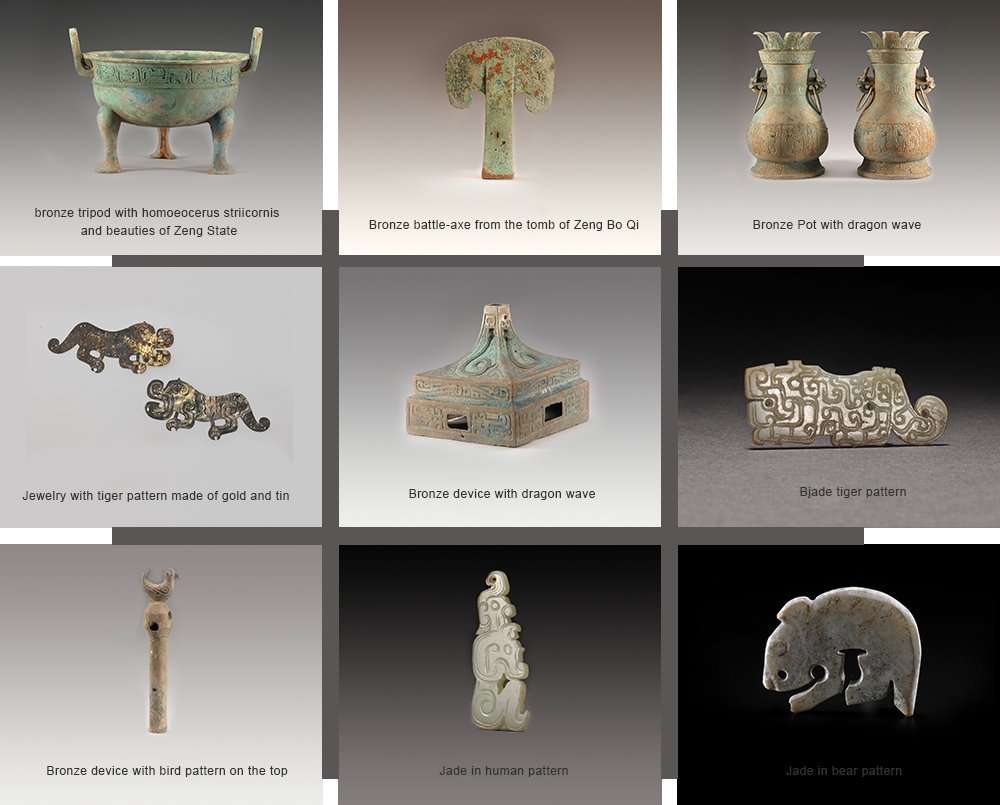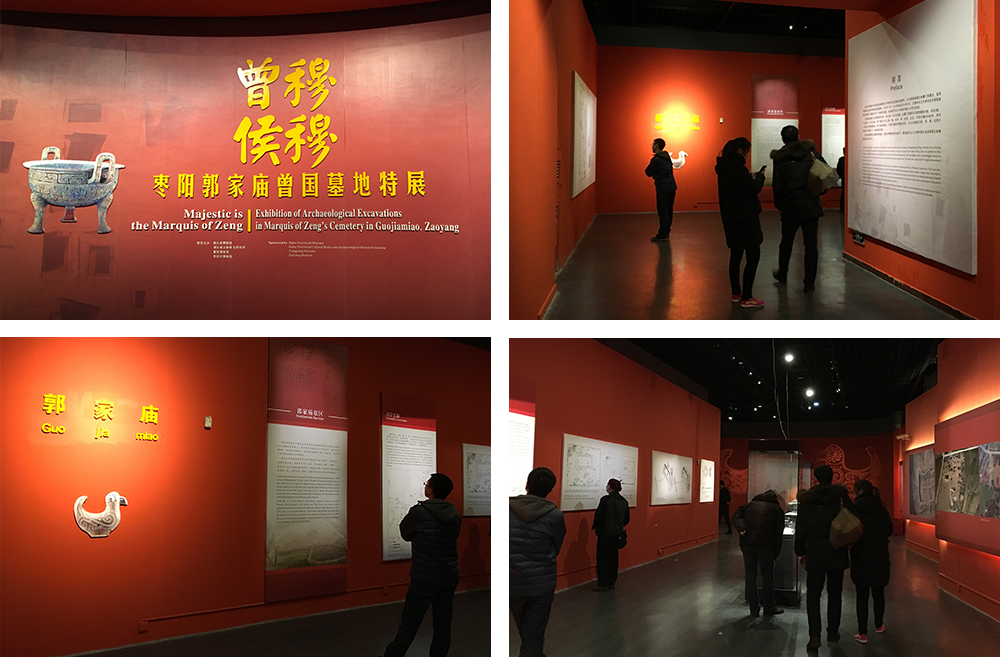

Exhibition time: February 2, 2016 - February 24, 2016
Location: The Comprehensive Hall, second floor, Hubei Provincial Museum
Introduction of the exhibition
The exhibition of Majestic Marquis of the State Zeng - Top 10 Archaeological Discoveries: Exhibition of the Guojiamiao Cemetery is the first special exhibition by the cooperation of the Changjiang Civilization Museum, the Hubei Provincial Museum, Hubei Provincial Institute of Cultural Relics and Archaeology Research, Xiangyang Municipal Museum and Zaoyang Municipal Museum. It fully displays the archaeological achievement of the excavation work in 2012 and 2014 in the Guojiamiao Cemetery in Zaoyang.
There is over 300 articles of selected cultural relics in this exhibition, including bronze ritual vessels, carriages and horses, weapons, jade, etc., to show to the audience the history and culture in the transition period from the Western Zhou Dynasty to the Eastern Zhou Dynasty and to enhance the understanding of the ancient civilizations of the Yangtze River Basin.
Introduction of the Guojiamiao Cemetery
The Guojiamiao Cemetery is located in Zaoyang City, Hubei Province, along the Han River which is the biggest tributary of the Yangtze River.
In November 2002 and the period from the end of 2014 to January 2015, archaeologists of Hubei Province carried out excavation work which could be described as a rescue project in the Guojiamiao Cemetery and Caomenwan Cemetery . As a result, over 5000 articles of culture relics made of copper, pottery, lacquered wood, bone, leather, jade, shell and so on were discoverd.
The excavation and research of the Guojiamiao Cemetery , is of great meaning in the field of history, musical archaeology and historical metallurgy for filling the blanks of the history of the Zeng State in early Spring and Autumn Period and providing new materials to solve the puzzle of “the mystery of the Zeng
State”. Some bronzes with inscription confirmed that the cemetery belonged to Zeng State, which provided important materials for the study of the early history, culture of the Zeng State and its relationship with the State of Chu, Deng, Huang and Xian. The great archaeological discovery in Guojiamiao, Yejiashan, the Wenfeng Tower Cemetery and the Guojiamiao Cemetery testified the fact that the Zeng State is an important kingdom subordinated to the south by the central government of Western Zhou Dynasty with highly advanced civilization of rites and music. This discovery deepened our understanding of the political structure of the Yangtze River in the Eastern Zhou Dynasty and Western Zhou Dynasty.
“Mu Mu”means majestic, which is used to eulogize the imperator in the Zhou Dynasty. In 2011, inscription of “Mu Mu Zeng Hou”was found in the unearthed bell chimes in the No. 4 tomb of the Yidigang Cemetery in Suizhou.
"Zeng" is the name of the country, located in the east of the Han River as conferred state of the important official Nangong Kuo in the Zhou Dynasty, which is also documented as surname country of Ji. In the Spring and Autumn Period, the Zeng State reached its peak, with territory extended to today’s Hubei and Henan. The downfall of the Zeng State happened in the middle of Warring States Period after 700 years.
"Hou" is the title of Marquis. Since the beginning of Chinese Qin Dynasty, the title of Marquis had been conferred by the sovereign. Hou is the second-class of the five levels of marquis in Zhou Dynasty. According to the record of Rites & Regulation of the Sovereign, the sovereign classified the salary of the ministers to five levels with the title of Gong, Hou, Bo, Zi and Nan.
Heritage Preview:

Interior of the exhibition:
